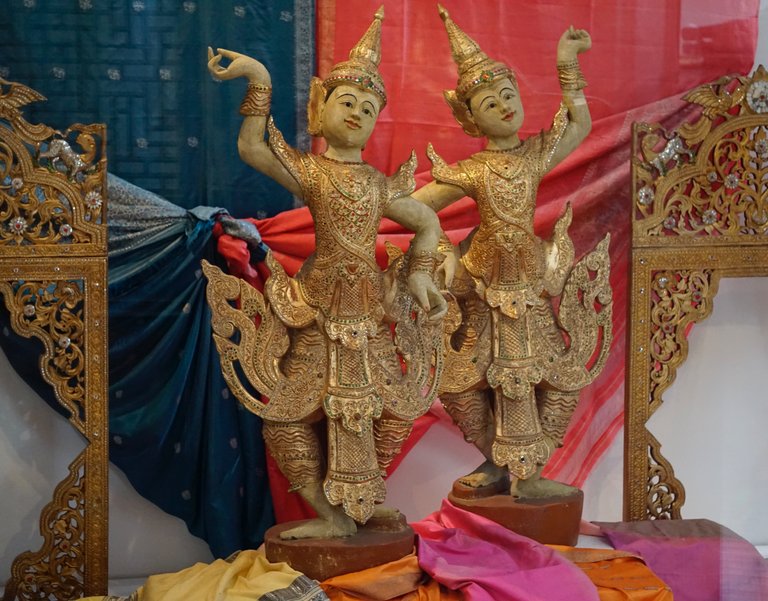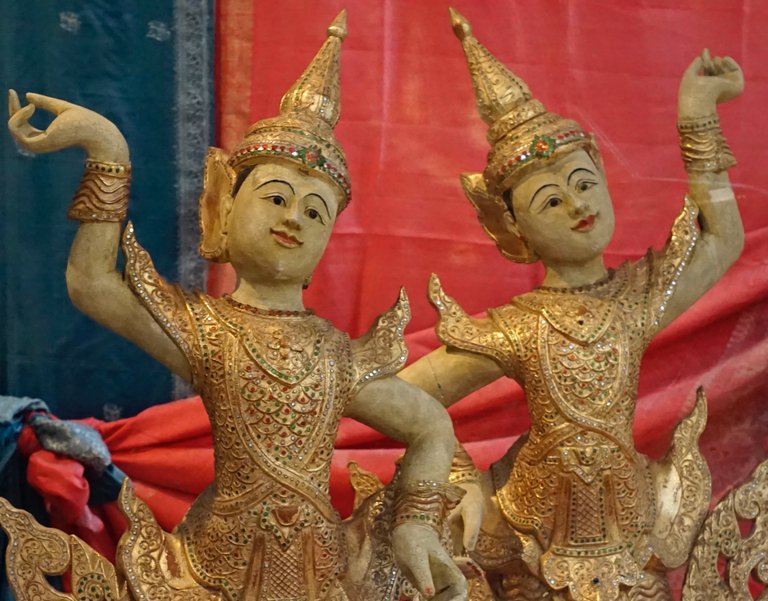Temple Dancers in Mythology
Good day dear community, at the beginning of my new post I would like to welcome you all to my new post and hope you had a day that was full of positive experience! Today I would like to discuss an interesting cultural topic and hope you are able to expand your knowledge.
Here you can see some pictures of sculptures that are supposed to represent temple dancers who appear in different cultures and are usually seen in mythology as a representative of God and also temple guardians are often depicted in a similar way but with a sincere pose. First and foremost, they have the task of appearing at ceremonies or events and you can find them in Indian, Thai, Cambodian or Indonesian culture and they have the task of impressing gods visitors with their dances. Mostly it are women who take on this task and it is part of it that the dancers adorn themselves with abstract clothing that can vary depending on the culture and the shape of this form already has a centuries-long tradition behind it and dancers with this typical pointed hat can usually be found in Indonesian culture where it is especially worn in Bali or in Thailand. Particularly well-known in Bali is the Legong dance from Java, which was already popular in the 13th century and has a strong religious background and the dance was also considered from a symbolic point of view as a gift for the gods and in Indonesia children are often familiarized with this art form in early years and it is one of the most influential traditions in Indonesia and different currents of dances have emerged. The dances were also used as a way to get in touch with the gods in general and nowadays, it is an important attraction that strongly influences tourism and is also linked to mysticism. In Thailand, the temple dancers also has a mythological background and is linked to the asparas which in Buddhist mythology are beings from a mixture of women and divine beings and they are also called divine dancers and are servants of the heavenly gods. The asparas were generally considered very talented and in addition to their dance art they were also amazing musicians and, similar to Indonesia, had the task of entertaining the gods and originally the aspara come from Cambodia and have shaped more cultures in later times and has generally largely influenced Buddhism. Also in India, the temple dance has strongly shaped the culture and here too the dances have a religious origin and were considered sacred and over time numerous different currents have developed and there are even interpretations that the world is said to have once emerged from a dance of the goddesses Shiva and nowadays it got similarity to other cultures and is preferably celebrated at festivals or serves as a tourist attraction.
Thanks for stopping by and I hope you could learn something new about mythology! I captured these pictures with my Camera Sony Alpha 6000 plus 55-210 mm lens.


These types of temples dancer some people might see it as evil not knowing that it is just culture differences
Good to know that you are also interested in mythology
https://twitter.com/WayShola84156/status/1772524830924976150?t=-8cEKhGocrfF96ztv5x3jg&s=19
https://twitter.com/lee19389/status/1772568380576276869
#hive #posh
Such traditions are special and should be known by all of us.
That's true! It is such an important part that has shaped several cultures :)
Thanks alot dear for sharing.